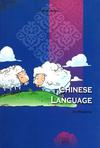中国的语言
出版时间:2011-1 出版社:五洲传播出版社 作者:Du Zhengming 页数:174
Tag标签:无
内容概要
China, a country of appealing mysteries. The Chinese nation, a nation intermittently strong and weak, honorable and infamous, awake and asleep, with a history of fivemillennia at the shortest and probably longer, has experienced the higheststage of ancient civilization in the most prosperous dynasties of the world,and made indelible contributions to the advance of human societies. As theworld's biggest nation, the Chinese people account for approximately aquarter of the whole population on earth. And as a standing member of the UN Security Council, it is exerting enor-mous influence on international affairs. Economically speaking, it is theworld's largest consumer market and human resource reservoir, as well asthe largest base of processing industries. Over the recent three decades, China's opening to the world has broughtabout unprecedented contact with the people of all other countries, result-ing in great advancement of the Chinese society and drastic growth of itseconomy, which have drawn ever greater attention of the world. Now again as in the past when China was in its prime, the world find itimpossible to overlook China and its people.
书籍目录
PrefaceAnnotating AbbreviationsChapter One: An Overview of the Chinese LanguageLanguages of the Han Chinese and Chinese Ethnic GroupsMandarin, Putonghua and Chinese DialectsClassic Chinese and Modern ChineseThe Speech and Writing of Modern ChineseChinese Characters and Their ChangesPinyin and the Computer Input of Chinese CharactersChapter Two: The Phonology of Mandarin ChineseClassification and Representation of Pinyin SoundsSimple InitialsCompound InitialsSimple FinalsCompound FinalsSummary: All Pinyin SoundsSpecial Cases: Sound Change (Sandhi)Chapter Three: Tones of Mandarin ChineseThe Tone and Meaning in Mandarin ChineseChange of Tones in ContextThe Light Tone Suffix in Orientation WordsSummaryChapter Four: Chinese Words and PhrasesChinese Word StructuresContent Words and Function WordsSubstantive WordsPredicate WordsFunction WordsWord GroupsChapter Five: The Basic Structures of Chinese SentencesSentence Components and Word OrderThe Sentence SubjectThe Sentence PredicateChapter Six: Complex Sentences and Compact SentencesThe Complex Sentence and Simple SentenceComplex Relations and ConnectivesCompact SentencesCompact Sentence ConnectivesOmission of Connectives in Compact SentencesChapter Seven: Summary: Features of Chinese Mandarin
章节摘录
Languages of the han chinese and Chinese Ethnic Groups Hanyu, or the language of the Han nationality, commonly known as theMandarin Chinese, is certainly the language generally used by the Chinesepeople. Its standard form is also called Putonghua, Guoyu, or Huayu, respec-tively in Mainland China, Taiwan, Malaysia and Singapore. But it is not theonly language used by all Chinese. This is because China is a big country with55 ethnic minorities in addition to the Han people, and most of them have theirown languages. Chinese linguists generally agree that the total number of lan-guages used by China's ethnic groups is over 80, with some ethnic groups us-ing more than one languages. Among these different languages, 30 have writ-ten forms. In terms of language genealogy, they are categorized into 5 differentfamilies: the Sino-Tibetan, Altai, Austro-Asiatic, Austronesian and Indo-European. Therefore, the phrase "Chinese Language" should in fact have its plural forms.When used in the singular form, it only means the language originally belong-ing to the Han people (hence called Hanyu), which has been adopted as thecommon language used across ethnic boundaries. Among all ethnic groups ofChina, some have adopted the Han people's language, with their own languageshaving gone into extinction, such as the Hui and Manchurian people(respectively counting for 9.8 million and 10.6 million in population). Othersuse both Hanyu and their own languages. The Chinese central government's language policy is to promote the use ofStandard Chinese (or Standard Mandarin) as the national language. In the meantime, however, the policy also encourages protection of the ethnic languages.According to Article 8 of the Law of the Peoples Republic of China on the StandardSpoken and Written Chinese Language, "all the nationalities shall have the free-dom to use and develop their own spoken and written languages". As a result,most preliminary and secondary schools in China's ethnic minority areas prac-tice bilingual education in both Mandarin Chinese and their own languages.
编辑推荐
Chinese Rites and Rituals Chinese Food Life Care Chinese Physical Exercises and Health Care Chinese Folk Customs
图书封面
图书标签Tags
无
评论、评分、阅读与下载
